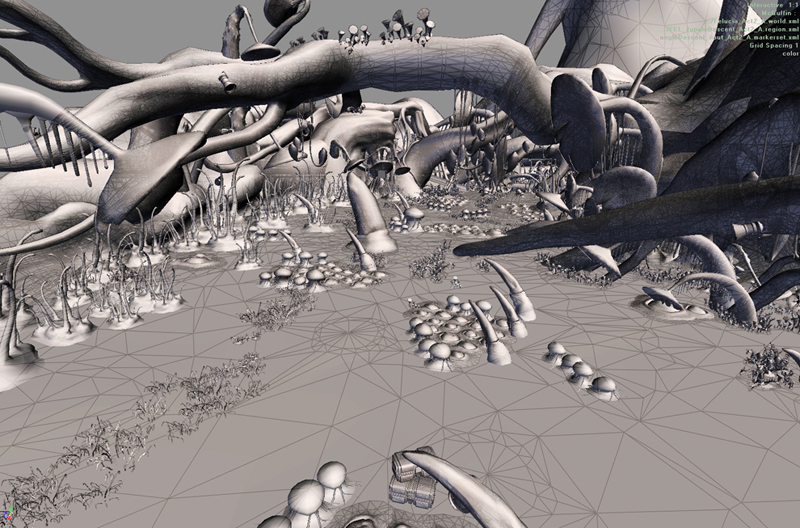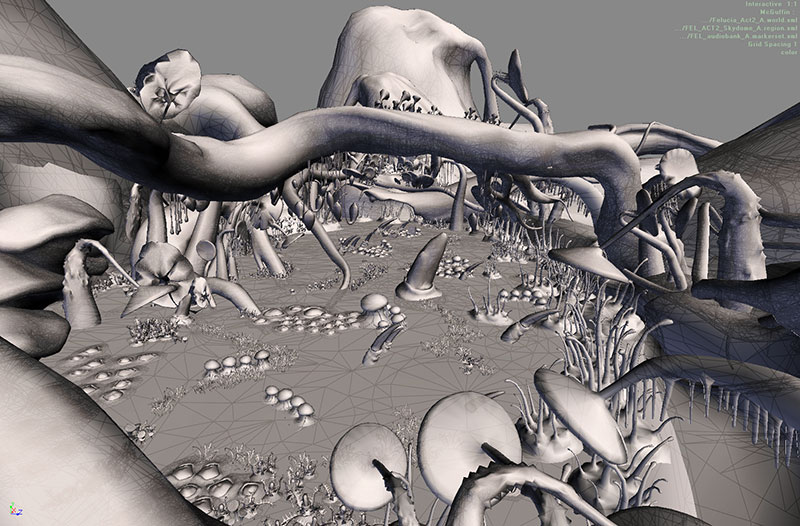 |
| hoth making of | |
| jedi temple making of | |
| bull rancor making of | |
| felucia making of | |
| . Making of Imperial Felucia | services | contact | about mirena |
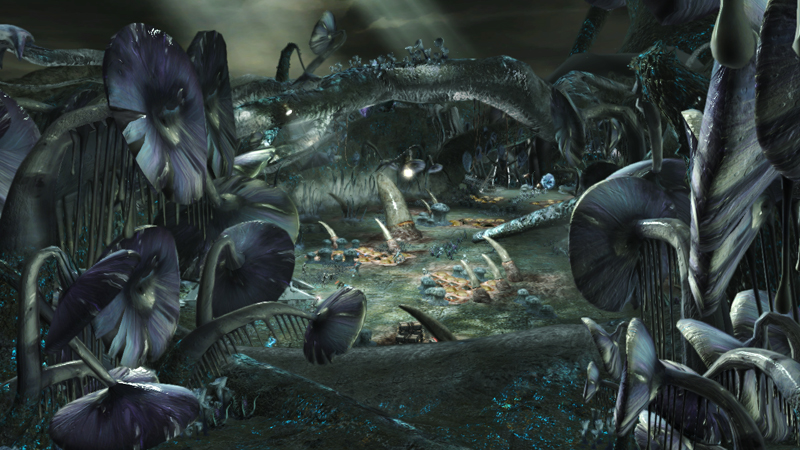
Game: Star Wars: the Force Unleashed
Level: Imperial Felucia
Credits: Senior Environment Artist
Detailed credits: I was responsible for creating final pass terrain geometry, 3d modeling of droopy plants and mushrooms, final shaders of plants and terrain, final textures. I was responsible for modeling all the unique Felucia Act2 plants, making them DMM/interactive, and creating textures and shaders. I also modeled the terrain, created the layered shaders and vertex painted them on the terrain. Also was responsible for plant placement, level lighting and level loading/management, optimization, export to both consoles. I was not responsible for special props in this scene which were created and implemented accross many levels: the "teeth" and the "bubbles" in this scene, as well as the ship and the crates.
Here is a mood piece for Imperial Felucia - this is what the Art director and the concept artists envisioned for this level and my key reference:
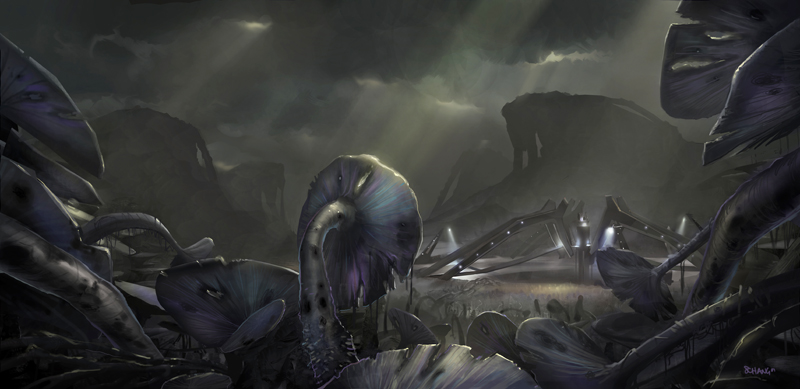
Here is a screen of the level at a stage where all the key ingredients were in (except proper lighting) - including droopy mushrooms with fake subsurface scattering shader node that ILM's TDs created so I could plug into the shader network ( you can see faint translucent veins glowing on the mushroom caps and stems). There is a lot of vegetation and the level is.. pretty dark but pretty close to the original vision:

Dark playspace wasn't useful for the purpose of combat. Once you dropped down into the "valley" you were confronted with darkness and greyness. I had to come up with a plan to bring back some pools of light and saturation.
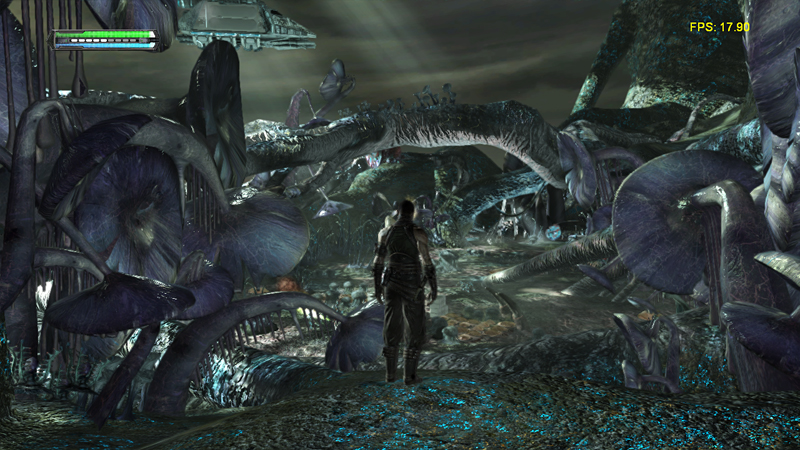
Our editor didn't have terrain editing capabilities - I modeled/UV-ed each area separately in maya and brought it into the editor. Once terrain was in - I'd populate with plants, roots and vines and other special terrain features:
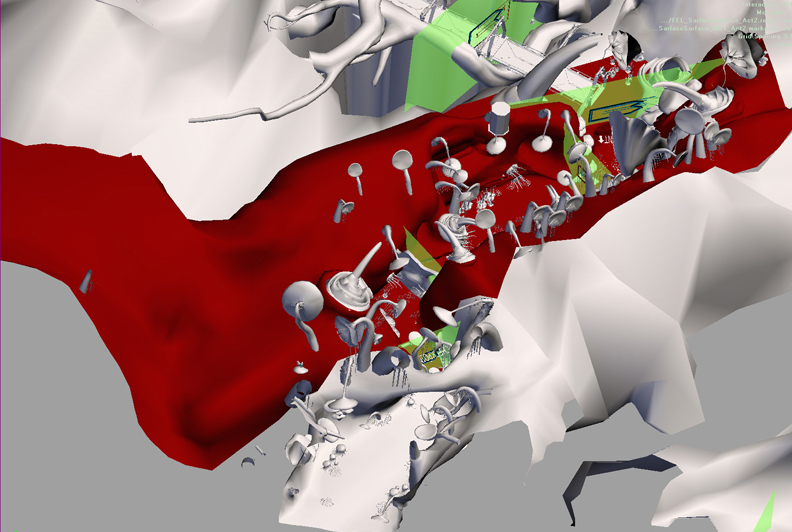
The Plant Tech involved three different technologies: Push Tech, Wind Tech and DMM. Push Tech involved plant reaction to Force Push by the player. All plants within a radius of the player had to bend in the direction of the Push which we accomplished by adding a vertex deformation node in the shader. Smaller plants would react more - larger ones less, with grass being the most succeptible. Wind Tech was also implemented via a vertex deformation node in the shader, except that the distortion was controlled by the level's global wind settings. Most Push Tech and Wind Tech were setup by the level artists and below is an example of a droopy plant shader wih a vertex distortion node. Shader nodes were some times created by the artists and sometimes written by the TDs - like the RimLighting shader node was written for me by the TDs as one of the key ingredients in faking subsurface scattering for the large plants.
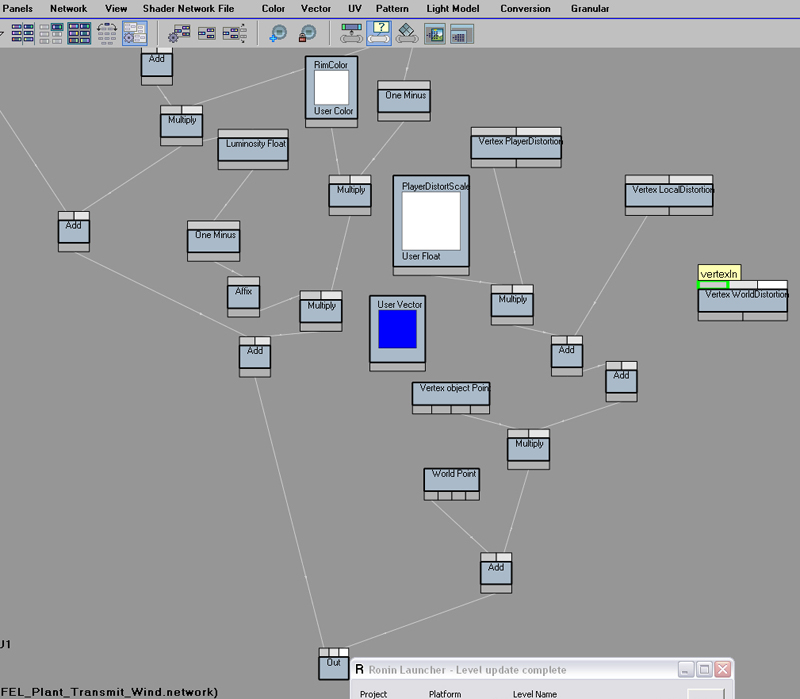
DMM (Digital Molecular Matter) was a key technology we used for bendable plants and destructibles. Every plant whithin the placespace was rigged to react to Force Push. A dedicated artist worked on setting up the bend and destruction cages. For Imperial Felucia I created mushrooms and other plants, where each plant had multiple versions and levels of decay. After I modeled and UV-ed them in maya and applied the shaders in Zeno, I would hand them over to the DMM artist for cage setup. Here is the beginning of Imperial Felucia populated with plants inside the editor..
